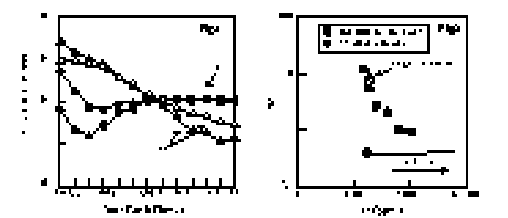the trace element contents of the analyzed CPX between xenoliths, within xenolith variation is small. Two distinct types of REE patterns are generally observed. One has a steep negative slope from LREE to HREE (A) and the other is characterized by a flat middle REE to HREE pattern (B), but variable LREE (Fig. 1). Major element and HREE variations are consistent with a fractional melting process and have not been significantly influenced by metasomatism. Elevated LREE and other incompatible trace elements, however, suggest that the CPX in many xenoliths has been modified by later metasomatic events. The generally higher LREE/HREE ratio and LREE abundances in the CPX of depleted harzburgite relative to those of lherzolite xenoliths, as well as a reverse correlation between LREE/HREE and Al or Yb content, is interpreted to reflect the harzburgite`s lower initial CPX content. The variation in LREE or Sr with respect to high field strength elements such as Zr and HREE in CPX from harzburgite xenoliths indicates that their behaviour reflects both kinetic effects and compositional variation in the metasomatising agent. The CPX of many lherzolite xenoliths exhibit U-shaped REE profiles interpreted to reflect incomplete re-equilibration with the metasomatic agent. The trace element characteristics of the metasomatic agent(s) were constrained by considering only the CPX which have high total REE contents and smooth REE profiles with negative slopes, as these are thought to have reached equilibration with the metasomatising agent. The estimated trace element composition of the fluid agent with which these CPX have equilibrated ranges from low values of Ce/Zr and Sr/Zr at high Zr contents, approaching those expected for a residual liquid that would evolve from a magma similar to the host alkaline basalt by amphibole and CPX fractionation, to high Ce/Zr and Sr/Zr values at low Zr contents, similar to those of carbonatite melts (Fig. 2). The apparent mixing array between these two end-members may reflect the superposition of two metasomatic events, one was caused by silicate melt genetically related to the host basalts and the other by a carbonatite melt.
